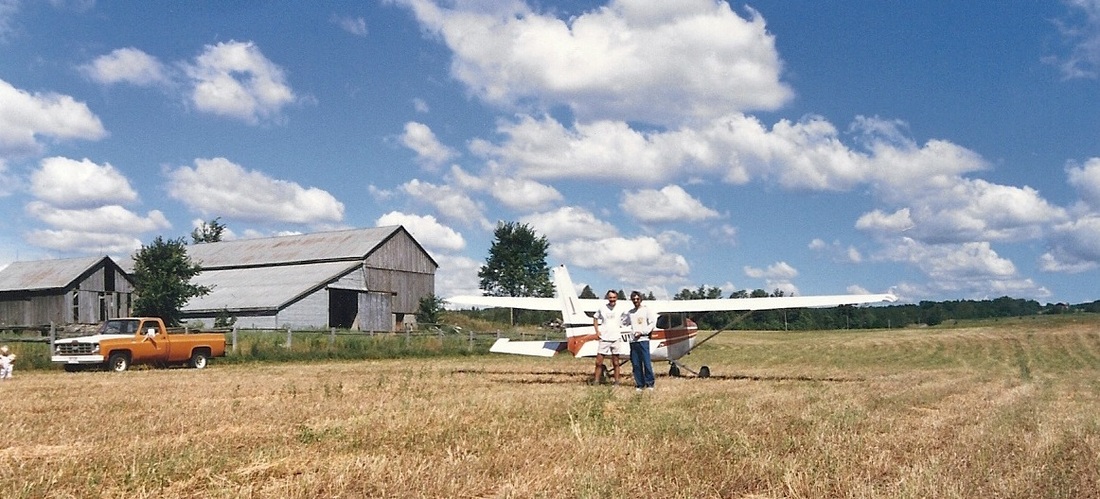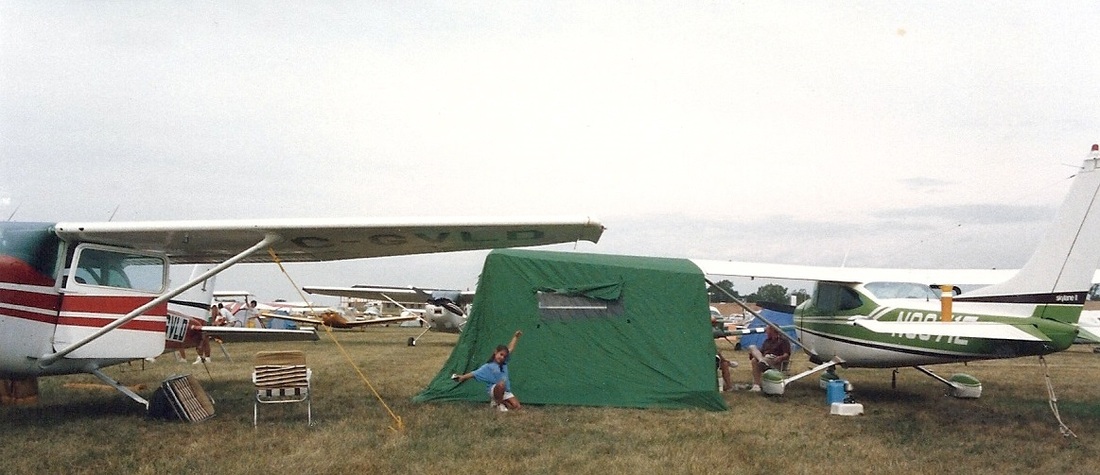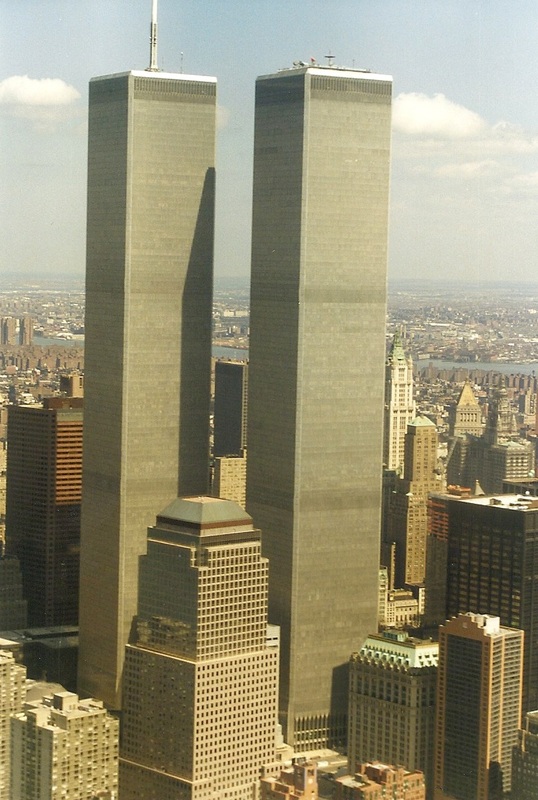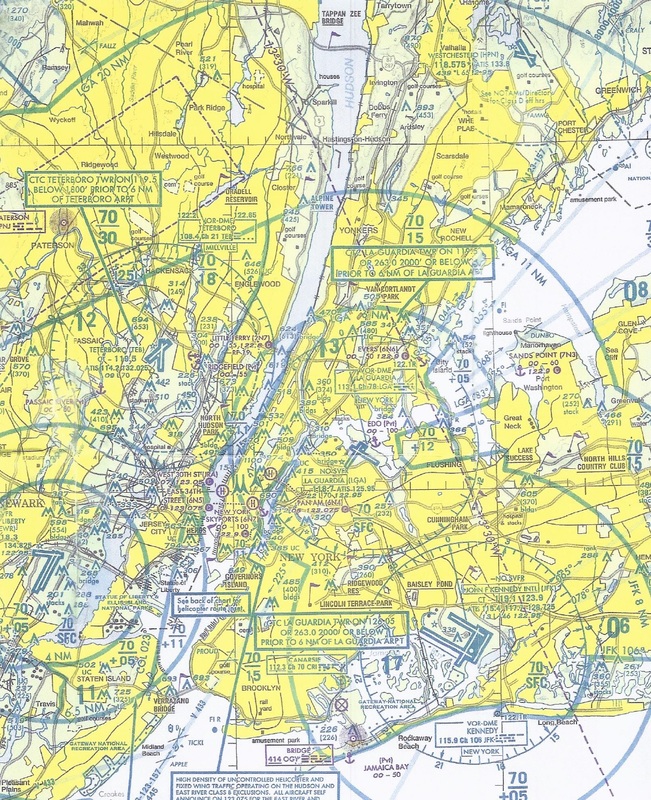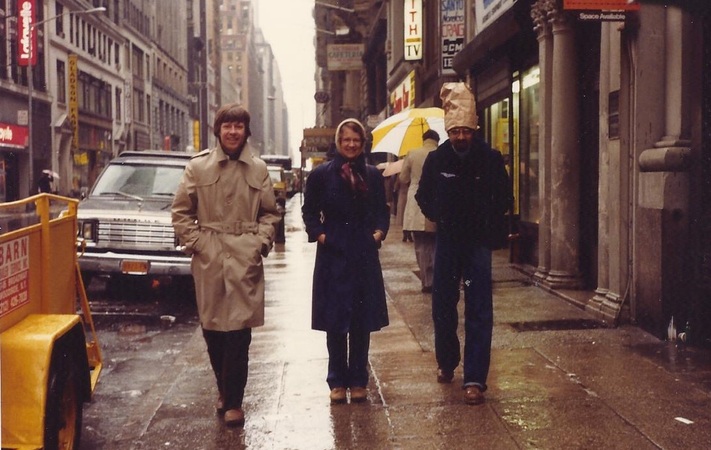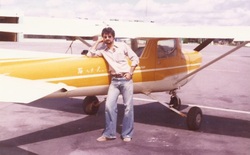
It took me an entire year to obtain my pilot's license. Financial constraints, conflicting work appointments, high demand for school aircraft bookings, and cancellations due to weather, all slowed things down. For two hardy lumberjacks it was much simpler. As the joke goes, Mo and Joe from the northern Ontario bush go into town and walk by a want ad for pilots in the window of the local aircraft charter office. They go inside and apply for the job. When asked about their experience, Mo responds, pointing to Joe, “He cut it, me pile it.”
License in hand, I was certainly eager to “pile it.” But that was easier said than done. Buttonville was such a busy airport I constantly had to queue for aircraft rentals and could not take planes away for extended trips. After some consideration, I talked to an old friend, Fernando Rodrigues, to see if he might be interested in sharing an aircraft purchase with me. Fernando, without much ado, said yes. I was glad, but also surprised, because at the time he did not have a pilot’s license. “I’ll take lessons in the plane,” he explained, and did.
In truth I should not have been surprised. I had met Fernando five years ago, plenty of time to realize this spontaneous yet practical decision was not out of character.
License in hand, I was certainly eager to “pile it.” But that was easier said than done. Buttonville was such a busy airport I constantly had to queue for aircraft rentals and could not take planes away for extended trips. After some consideration, I talked to an old friend, Fernando Rodrigues, to see if he might be interested in sharing an aircraft purchase with me. Fernando, without much ado, said yes. I was glad, but also surprised, because at the time he did not have a pilot’s license. “I’ll take lessons in the plane,” he explained, and did.
In truth I should not have been surprised. I had met Fernando five years ago, plenty of time to realize this spontaneous yet practical decision was not out of character.
Fernando is someone with the independence and adventurousness of Marco Polo and the determination of Napoleon. When he wants to do something, he can change course on a dime, joining me, for instance, at little more than a moment’s notice on a flight. Though witty and easygoing most of the time, he does not tolerate fools kindly, especially if they are blocking his lane on the expressway. Priding himself on living frugally yet enjoying life to the fullest, he has become a jack-of-all-trades. Because of his background in engineering and years spent rebuilding things from the ground up, he can fix anything--plumbing, electricity, cars, houses, sailboats. Planes now became part of that list. Despite our being a bit of an odd couple - I was more meticulous and cautious in my flying, he more freewheeling - I felt we would be good flying partners; and I would feel a lot safer. Little did we know at the time that Fernando would come to play a major role in many of my future flights.
We bought a 1973 Cessna 172, call sign C-GVLD, from an aircraft broker called Manfred Humphries. As part of the deal, Manfred had offered to take me up for two free hours of IFR (Instrument Flight Rules) instruction, which means flying using only the instrument panel for navigation, without reference to the ground and horizon. Essentially, it qualifies pilots to fly safely in bad weather. On the day we were to go up, a week after taking possession of the aircraft, I recall phoning him from Buttonville. He asked me to pick him up from the Toronto Island Airport, about 20 miles to the south. I was a little hesitant. The day was cold and breezy, and I noticed strong crosswinds. I said to him on the phone, “Manfred, are you sure today is a good day? From where I’m standing I can see the umbrella outside shaking in the wind.” Manfred shot back, “Sounds to me like your knees are shaking in the wind!” I picked him up an hour later.
To help defray the cost of owning the plane, I rented it out for a while to a couple of other pilots. One of them, Trevor Tomkinson, became a good friend. Trevor, who was IFR qualified and rated for floats and twin-engine aircraft, worked with Transport Canada, the Canadian equivalent of the U.S. Federal Aviation Administration (FAA). Hearing about the twists and turns in my life, Trevor would often tell me that I was “born with a horseshoe up my ass.” From then on, whenever an unexpected turn for the better occurred, Ulrike and I would look at each other and say, “Ah, Trevor’s horseshoe!”
By March of 1980 I had obtained a night endorsement. This removed the problem of limited daylight flying time in a country that was short on daylight hours for nearly half the year. That same month, with a scant 120 hours of flying experience under my belt, “peanuts” as I would later learn, Ulrike and I undertook a flight to New York City—an exciting destination for my first long-distance flight. Another couple, brave souls even more innocent of experience than we were, joined us. Ulrike’s sister, Nixe, had taken time off from teaching German in one of the German language schools that flourished under Trudeau’s multicultural policy, and so had her husband, Niels, who was always busy as an architect, designing hospitals and schools in Edmonton, Alberta. Thrilled and naive, we took off.
We bought a 1973 Cessna 172, call sign C-GVLD, from an aircraft broker called Manfred Humphries. As part of the deal, Manfred had offered to take me up for two free hours of IFR (Instrument Flight Rules) instruction, which means flying using only the instrument panel for navigation, without reference to the ground and horizon. Essentially, it qualifies pilots to fly safely in bad weather. On the day we were to go up, a week after taking possession of the aircraft, I recall phoning him from Buttonville. He asked me to pick him up from the Toronto Island Airport, about 20 miles to the south. I was a little hesitant. The day was cold and breezy, and I noticed strong crosswinds. I said to him on the phone, “Manfred, are you sure today is a good day? From where I’m standing I can see the umbrella outside shaking in the wind.” Manfred shot back, “Sounds to me like your knees are shaking in the wind!” I picked him up an hour later.
To help defray the cost of owning the plane, I rented it out for a while to a couple of other pilots. One of them, Trevor Tomkinson, became a good friend. Trevor, who was IFR qualified and rated for floats and twin-engine aircraft, worked with Transport Canada, the Canadian equivalent of the U.S. Federal Aviation Administration (FAA). Hearing about the twists and turns in my life, Trevor would often tell me that I was “born with a horseshoe up my ass.” From then on, whenever an unexpected turn for the better occurred, Ulrike and I would look at each other and say, “Ah, Trevor’s horseshoe!”
By March of 1980 I had obtained a night endorsement. This removed the problem of limited daylight flying time in a country that was short on daylight hours for nearly half the year. That same month, with a scant 120 hours of flying experience under my belt, “peanuts” as I would later learn, Ulrike and I undertook a flight to New York City—an exciting destination for my first long-distance flight. Another couple, brave souls even more innocent of experience than we were, joined us. Ulrike’s sister, Nixe, had taken time off from teaching German in one of the German language schools that flourished under Trudeau’s multicultural policy, and so had her husband, Niels, who was always busy as an architect, designing hospitals and schools in Edmonton, Alberta. Thrilled and naive, we took off.
The closer we got to New York the more nervous I became. The reality took hold that landing at a large international airport was a frightening prospect for a novice small-plane pilot. The New York area is undoubtedly one of the busiest air traffic areas in the world with three major airports: JFK handles international traffic, LaGuardia national traffic, and Newark in New Jersey both national and international. Corporate and private aviation (collectively called general aviation or GA) is handled by a number of other smaller but extremely busy airports in the region, in New Jersey, New York, and Connecticut, the three neighboring states collectively termed “Triboro.” Among these GA airports, Teterboro Airport in New Jersey is the largest and busiest; it is also the closest to New York City, which is why I chose to land there.
The Triboro area on the aeronautical charts has large red circles in decreasing sizes that frequently overlap, each demarcating a control zone. To get to Teterboro, I would have to transition through a series of control zones, the controller of each zone handing me off to the next in quick succession. I knew each controller would assign me a new radio frequency, changes in altitude to control my descent and specific compass directions to integrate me into the complex traffic pattern, and would warn me of other traffic close by. They would also expect immediate acknowledgment of the message and a rapid radio response.
The Triboro area on the aeronautical charts has large red circles in decreasing sizes that frequently overlap, each demarcating a control zone. To get to Teterboro, I would have to transition through a series of control zones, the controller of each zone handing me off to the next in quick succession. I knew each controller would assign me a new radio frequency, changes in altitude to control my descent and specific compass directions to integrate me into the complex traffic pattern, and would warn me of other traffic close by. They would also expect immediate acknowledgment of the message and a rapid radio response.
This onslaught of radio chatter would continue nonstop for over half an hour. I realized that I needed to be one hundred per cent on the ball all the time in order not to screw up the radio transmissions, the flying and the navigation. There would be no forgiveness for any sloppiness in my integration with the heavy and faster traffic. If I was even slightly careless, I could veer into the path of other planes and cause a crisis situation.
With every passing mile the number of radio transmissions from all the traffic converging on this area multiplied. I began to perspire. Palms cold with sweat, I repeatedly tried to get through to Teterboro Arrivals to let them know we were heading their way. But I couldn’t get a word in edgewise. The brief requests, abrupt replies, instructions and acknowledgments had become an uninterrupted stream. How would I ever manage to get my request for landing through? Finally, in half a panic, I simply jumped in, trying my best not to fumble my words in the hurry.
“Teterboro Arrival. This is Cessna Skyhawk Charlie Golf Victor Lima Delta, VFR at 5, 500, squawking 1200, estimating 40 miles northeast, with information Lima.”
The controller instantly replied, “Canadian Skyhawk, stand by.”
I waited anxiously to hear a follow-up. Numerous transmissions went by, but none addressed to me. It seemed like an awfully long standby. Had the controller forgotten me? About five minutes later I jumped in again.
“Teterboro Arrival. Golf Victor Lima Delta.”
Immediately I heard, “Canadian Victor Lima Delta, squawk 3314,” followed moments later by “Canadian Victor Lima Delta, you are radar contact, maintain VFR at all times.”
Once in the hands of the controller, everything went unbelievably fine, like walking: step one, step two. All I had to do was follow radar vector instructions until the airport was in sight. Finally, amidst hundreds of transmissions I heard our aircraft call sign again.
“Victor Lima Delta, turn to 300 degrees now, and descend to 2,500 feet. Call Teterboro Tower when established, on 124.80.”
In quick succession came landing instructions, a heading to follow to the runway and then the magic words:
“Canadian Victor Lima Delta, you are cleared to land, number two, behind the Mooney on three mile final.”
After landing, a wave of relief washed over me. I had made it. Taking deep long breaths, I slowly unclenched my body. As I taxied past an impressive array of corporate jets, larger light aircraft and numerous little ones like ours, I couldn’t help but give myself mental pats on the back. I had managed. Yes sirree. I was now one of them.
After a very pleasant stay in New York City where we got our fix of plays, operas, old hotels with saggy beds, museums, gourmet food, rain and broken umbrellas, we set off on our return journey. As we were cruising along, fairly high at 9,500 feet and with mildly bumpy conditions, my brother-in-law Niels suddenly leaned forward and asked if we could land at the next airport. He needed a washroom badly. If only he had said something earlier, I could have landed just twenty miles back. Now, forward or back it would be fifteen minutes to touchdown. What a dilemma. Could he manage that long? He would have to.
Five minutes later he informed me that all was fine and to forget the landing. What? It turns out that a plastic bag and a new cheese bowl we had purchased in Manhattan had done the trick. Ever since, two wide-mouth pickle jars have become mandatory flight paraphernalia. They work wonderfully and have been used successfully many times by gentlemen and ladies alike.
The flight to New York gave me a major boost in confidence. From then on I felt ready to tackle most anything. When I later told my flying instructor Bal Suagh about our trip, he exclaimed: “You did what! I have over 10,000 hours of flying experience, and I would still hesitate to fly into the Big Apple Control Area.” In retrospect it was a good thing that I had not talked to him about it earlier, because he might have talked me out of it. It was this experience that largely removed my fear of flying into large international airports very early on. Naïveté may have some benefits after all.
Even though Bal himself would not have taken this trip, he had laid the groundwork for me. He had been an excellent instructor, very demanding and thorough, quick to criticize, but equally quick to praise. His instructions, many of which are indelibly printed on my mind, have guided me over the years. I will never forget, for example, one instance when we were practicing landings in crosswinds. I must not have been correcting appropriately for the wind conditions on approach because the aircraft drifted, was being pushed away from the centerline. Bal gently reminded me to turn the control column so that the plane would bank (that is, head into the wind), which I immediately did. As we touched down, instead of increasing the turn into the wind as required when slowing down, I instinctively straightened the column again. This was dead wrong. A strong crosswind could now lift one wing and topple the plane. Instantly Bal rapped my knuckles hard and shouted, “Did I teach you that?” My crosswind flying has never been a problem since.
Unfortunately Bal’s own flying career was cut short some years later. While vacationing with his family in Punjab, India, a freak accident occurred. During a tour of a plastics factory with a relative, a minute particle of plastic flew into one of his eyes. He was rushed to the hospital where doctors told him that a microscopic sliver had penetrated the retina and that it needed to be removed immediately. Bal, however, chose to get the operation performed in Canada, returning at once to Toronto. It was a costly delay. Doctors operated, but without success. He permanently lost his sight in that eye and with that his ability to fly, a devastating experience for a man for whom flying was everything. I couldn’t believe it. One tiny moment; and fortune turned. It made me wonder what was in store for us.
The flight to New York gave me a major boost in confidence. From then on I felt ready to tackle most anything. When I later told my flying instructor Bal Suagh about our trip, he exclaimed: “You did what! I have over 10,000 hours of flying experience, and I would still hesitate to fly into the Big Apple Control Area.” In retrospect it was a good thing that I had not talked to him about it earlier, because he might have talked me out of it. It was this experience that largely removed my fear of flying into large international airports very early on. Naïveté may have some benefits after all.
Even though Bal himself would not have taken this trip, he had laid the groundwork for me. He had been an excellent instructor, very demanding and thorough, quick to criticize, but equally quick to praise. His instructions, many of which are indelibly printed on my mind, have guided me over the years. I will never forget, for example, one instance when we were practicing landings in crosswinds. I must not have been correcting appropriately for the wind conditions on approach because the aircraft drifted, was being pushed away from the centerline. Bal gently reminded me to turn the control column so that the plane would bank (that is, head into the wind), which I immediately did. As we touched down, instead of increasing the turn into the wind as required when slowing down, I instinctively straightened the column again. This was dead wrong. A strong crosswind could now lift one wing and topple the plane. Instantly Bal rapped my knuckles hard and shouted, “Did I teach you that?” My crosswind flying has never been a problem since.
Unfortunately Bal’s own flying career was cut short some years later. While vacationing with his family in Punjab, India, a freak accident occurred. During a tour of a plastics factory with a relative, a minute particle of plastic flew into one of his eyes. He was rushed to the hospital where doctors told him that a microscopic sliver had penetrated the retina and that it needed to be removed immediately. Bal, however, chose to get the operation performed in Canada, returning at once to Toronto. It was a costly delay. Doctors operated, but without success. He permanently lost his sight in that eye and with that his ability to fly, a devastating experience for a man for whom flying was everything. I couldn’t believe it. One tiny moment; and fortune turned. It made me wonder what was in store for us.
